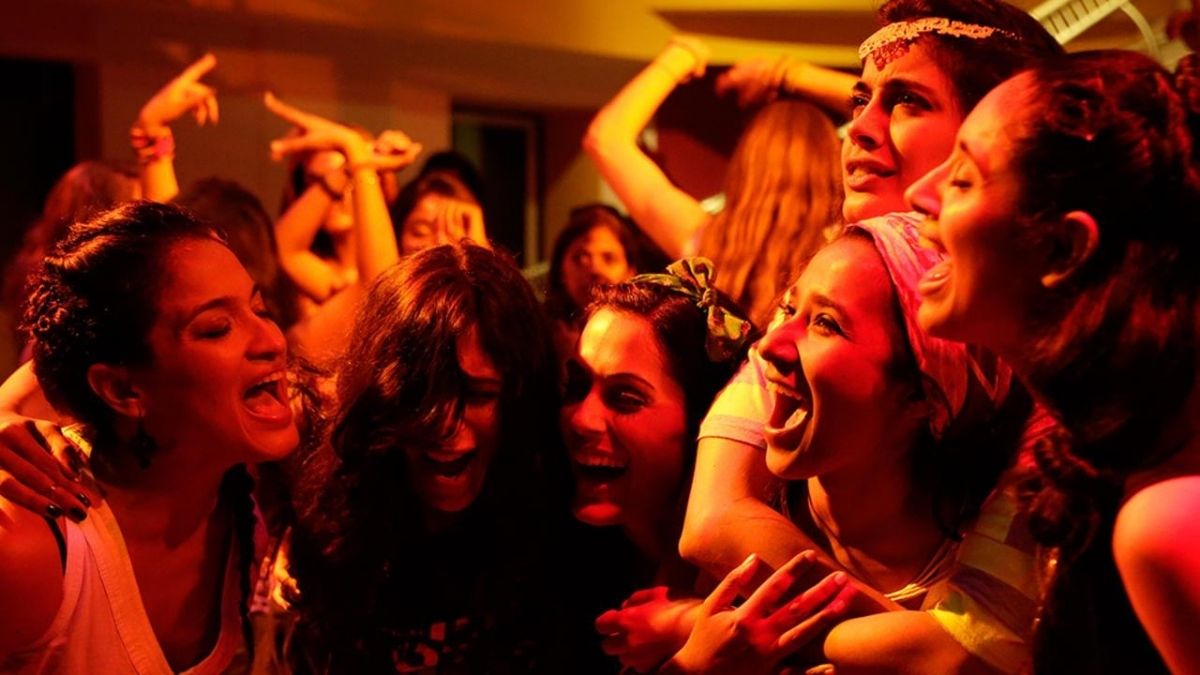
Goddesses of small and beautiful things
Angry Indian Goddesses
Director: Pan Nalin
Actors: Amrita Maghera, Sarah Jane Dias, Sandhya Mridul, Anushka Manchanda
Rating: ****
If you haven’t noticed this already, here’s what’s most perceptively changed in urban India, besides cosmetic frivolities like malls or multiplexes: it’s the urban Indian woman.
Don’t wish to sound needlessly insightful while stating the obvious. But there’s no way that 15 years ago, the number of Indian women, for instance,in their mid-20s to late 30s who are single (meaning unmarried/divorced/dating/looking, or just ‘being’) would have so far outstripped men in a similar state. I speak from personal, anecdotal evidence. And speaking of which, they appear to be just as happy (or unhappy) as anyone who’s so-called ‘settled’—of whom somehow I know very few. Is this a function of me being in metropolitan Mumbai, male and single myself? No. It’s not some phenomenon that stares you in the face either. It is what it is. Normal—or whatever—as it were.
Do Indian films (and nearly all of them are urban) reflect this enough? Once in a while, in a banal sort of way, they do. (Far too many examples come to mind; no point running them down here). A lot of post-millennial desi chick-lit writing is precisely about that as well. Not claiming to be an expert. I haven’t read those books. But I have read about them.
All said, I can’t for the life of me recall an Indian “women-centric picture” where just peering at the characters on the screen, it felt like I was really looking at some of my own friends with the yoga mat in the morning. Their life’s issues could be similar, even their professions seem the same—an aspiring actor (Amrit Maghera), an activist (Tannishtha Chatterjee), a busy corporate nut-cracker (Sandhya Mridul), a talented artiste/musician (Anushka Manchanda)…. They all gather in Goa to celebrate a supposedly ‘surprise wedding’. Flip through pictures on your Facebook. The venue will not surprise you one bit.
The point is not who’s getting married, why, and to whom, or how. This isn’t Monsoon Wedding. It isn’t some ‘destination wedding’ pic either. The point is that these women are all in the same villa as the camera, from various angles, photographs conversations and moments like a fly on the wall.
This would be a dream role for each actor on the screen. And god/goddess knows, they’re phenomenally good at what they do (Sarah Jane-Dias, Pavleen Gujral, Rajshree Deshpande are the ones I haven’t mentioned above). This is because they come across as such close approximations of their own uninhibited selves. They go easy on each other as if chuddy-buddies for long. It is as life would be. Even if in the first few minutes, the film appears dangerously over-the-top.
There is much joie de vivre (the only French you need to know). There are also underlying tensions. The movie is in equal measure introverted and extroverted. The perspective is entirely female. As is the camera’s gaze. This inversion is oddly refreshing.
There are only two real men who briefly walk into this film, both of whom are nothing short of caricatures—one, the over-caring boyfriend; the other a half-nude eye-candy washing the car with a hose-pipe, who will inspire men to hit the gym, in the same way that all of mass media forces women to look a certain type!
Does that make this picture “feministic”? Yes, if you just consider that feminism (like most ‘isms’) is based on an idea (only radical to some) that all men and women are equal. They’re different, yes. One’s better at something and the other at something else—evening each other out towardsequality, eventually.
Is that the lay of the land? Not the one these women live in, which is India of course: a schizophrenic culture in an odd timeline in history that resembles both West Europe and West Asia (or the Middle East)—depending on who or where you are.
If you needed further proof of that, what could be better than this film on freedom itself that’s been mercilessly edited by the Baaps of beeps and blurred images—the current Indian censor board. Yes,that’s intolerance, my friend, of a worldview that is separate from their own. It is also ironic. The supposedly independent-minded women in the picture face the same tyranny on the Indian street.
Have I told you the plot then? No. On the face of it, this movie isn’t so much about the plot. I’m told this drama, for the most part, emerged from an improvisational workshop where the actors created and reacted to situations as they occurred.
But there is a stirring script with a beginning, middle and end, with all movie manipulations aimed to move you, and a climax that on paper would seem just as ‘Bollywood’ as the sort of films one of the lead characters in this movie (Amrit) acts in.
Yet, every delicately directed moment (Pan Nalin) feels light, heavy, exciting, depressing, honest, and real all at once. It astutely reflects the times we live in, and if you’re closely aware of this world, it hits you even harder. Set 15 years ago, this film would have seemed very fake.
